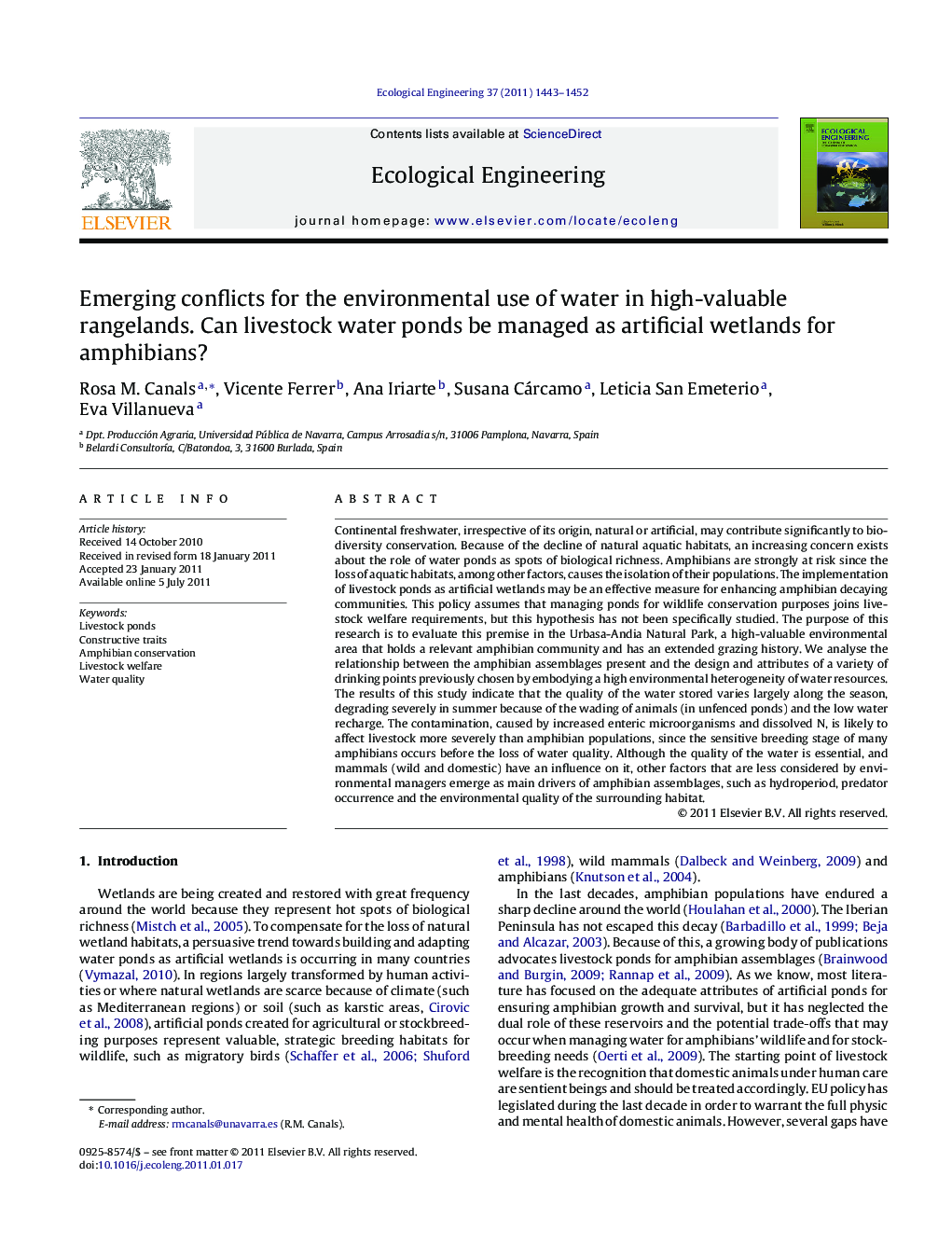| کد مقاله | کد نشریه | سال انتشار | مقاله انگلیسی | نسخه تمام متن |
|---|---|---|---|---|
| 4390264 | 1305164 | 2011 | 10 صفحه PDF | دانلود رایگان |

Continental freshwater, irrespective of its origin, natural or artificial, may contribute significantly to biodiversity conservation. Because of the decline of natural aquatic habitats, an increasing concern exists about the role of water ponds as spots of biological richness. Amphibians are strongly at risk since the loss of aquatic habitats, among other factors, causes the isolation of their populations. The implementation of livestock ponds as artificial wetlands may be an effective measure for enhancing amphibian decaying communities. This policy assumes that managing ponds for wildlife conservation purposes joins livestock welfare requirements, but this hypothesis has not been specifically studied. The purpose of this research is to evaluate this premise in the Urbasa-Andia Natural Park, a high-valuable environmental area that holds a relevant amphibian community and has an extended grazing history. We analyse the relationship between the amphibian assemblages present and the design and attributes of a variety of drinking points previously chosen by embodying a high environmental heterogeneity of water resources. The results of this study indicate that the quality of the water stored varies largely along the season, degrading severely in summer because of the wading of animals (in unfenced ponds) and the low water recharge. The contamination, caused by increased enteric microorganisms and dissolved N, is likely to affect livestock more severely than amphibian populations, since the sensitive breeding stage of many amphibians occurs before the loss of water quality. Although the quality of the water is essential, and mammals (wild and domestic) have an influence on it, other factors that are less considered by environmental managers emerge as main drivers of amphibian assemblages, such as hydroperiod, predator occurrence and the environmental quality of the surrounding habitat.
Journal: Ecological Engineering - Volume 37, Issue 10, October 2011, Pages 1443–1452